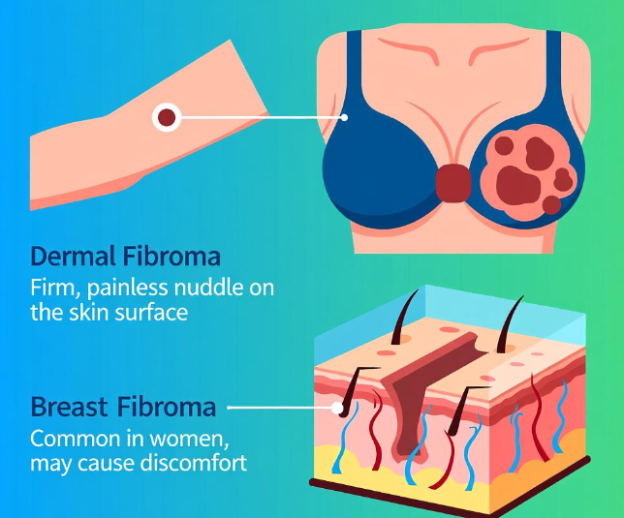Fibromas are benign tumors composed of fibrous connective tissue. Their symptoms depend on location and size, but most present as slow-growing, painless, firm nodules.
Dermatofibroma typically measures 0.5–1.5 cm, reddish-brown, smooth or rough, slightly tender when pressed; lateral compression produces a central dimple. Lesions favor extremities.
Gingival fibromatosis presents as diffuse, symmetric gingival hyperplasia with firm consistency, covering crowns, causing tooth displacement, eruption delay and masticatory dysfunction.
Deep soft-tissue fibromas manifest as ill-defined firm masses; nerve or joint involvement may produce pain, numbness, or limited motion.
Neurofibroma lies within or under skin, soft, skin-colored or pink, sometimes painful or paresthetic; plexiform variants enlarge and alter appearance.
Non-ossifying fibroma arises in bone, causing dull pain, pathologic fracture, firm swelling, and adjacent joint restriction.
| Symptom | Description |
|---|---|
| Skin nodule | Small, firm, reddish-brown, sometimes tender |
| Gingival overgrowth | Diffuse, firm, covers teeth, distorts bite |
| Deep mass | Ill-defined, hard, may limit motion or compress nerves |
| Bone lesion | Local pain, fracture risk, swelling near joint |
